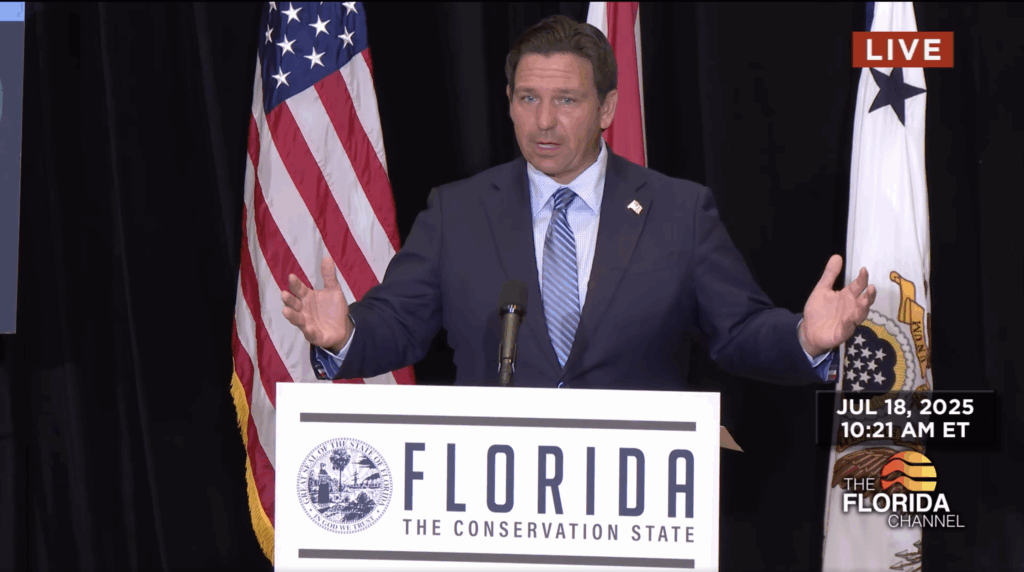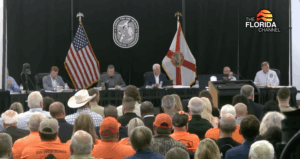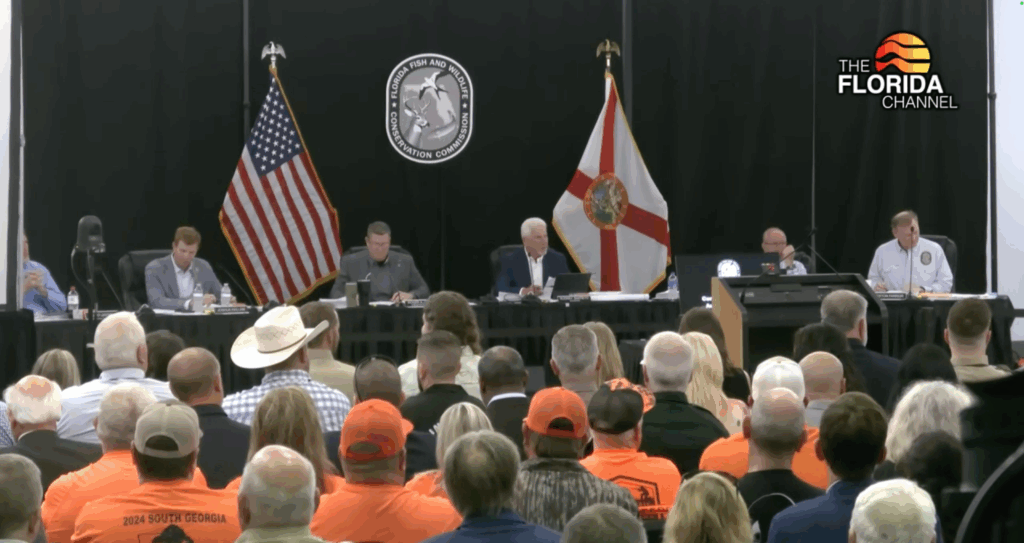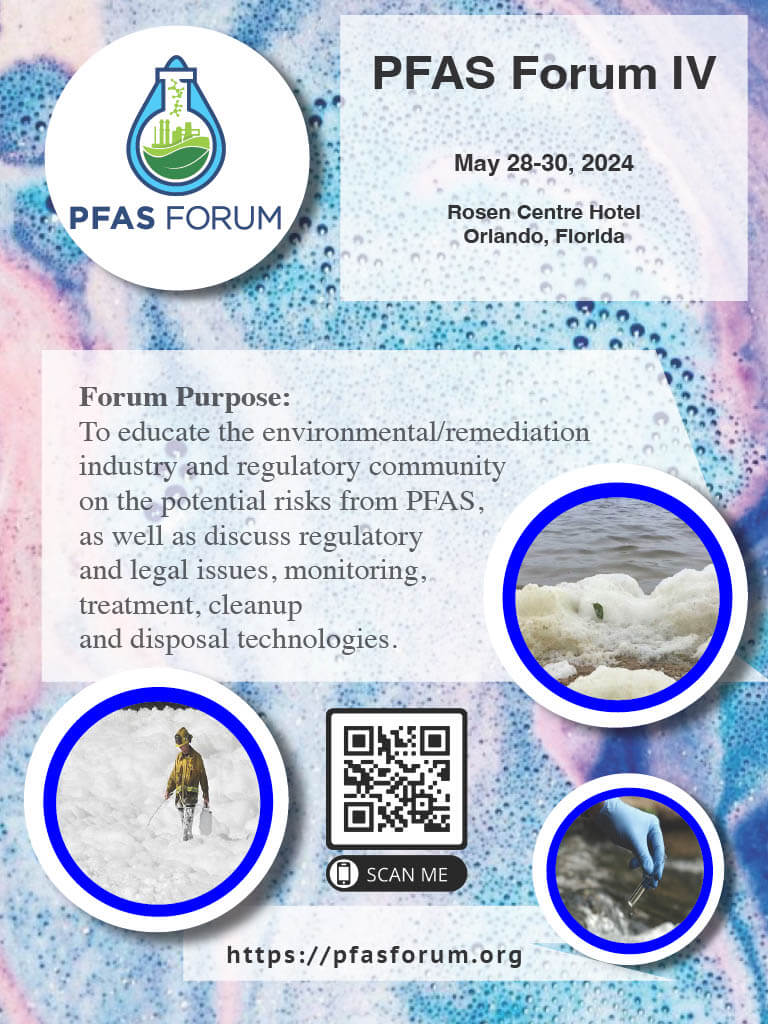
By PATRICK GILLESPIE
MARCO ISLAND – Standing before a room full of Florida environmental professionals at one of the largest environmental conferences in the country, Gov. Ron DeSantis announced on Friday a historic agreement between the State of Florida and the U.S. Army Corps of Engineers to allow the state to complete the EAA Reservoir five years early, in 2029.
“We are not just going to say the federal government is going to do the work for us,” DeSantis said before an audience of environmental professionals at the 39th Annual Environmental Permitting Summer School conference. “This is the largest environmental restoration in the world. We’re putting our money where our mouth is.”
As part of a Memorandum of Understanding between the State and the Army Corps of Engineers, the State will assume control of construction and federal funding from the Corps, which will expedite permitting so the project can be completed in 2029, rather than the scheduled 2034 deadline. The state now has authority to construct pump stations, the Blue Shanty Flow way, and other construction projects.
Florida and the federal government share a 50/50 funding commitment for Everglades restoration. DeSantis said he mentioned recently to President Donald Trump the idea of the State taking over certain construction projects and the President agreed to make it happen.
DeSantis said the State can move the project more quickly and with fewer interruptions if controlling it without federal interference. This would allow Florida to take the lead on completing certain federally authorized restoration projects.
As part of its argument in support, the Governor previously stated that the state has already delivered significant progress on the Everglades Agricultural Area (EAA) Reservoir, breaking ground ahead of schedule and completing its portion of the project in 2024.
On Jan. 9 in Juno Beach, DeSantis originally floated the idea of the State gaining authority. Within six months, the idea became a reality. Both the state and federal governments pump billions of dollars into completing water projects, in conjunction with the South Florida Water Management District.
“We have a great partner with the Trump Administration and the Department of the Army where we’re working together and we’re maximizing the resources we bring to the table,” DeSantis said. “I think people are going to be very pleased.”
D. Lee Forsgren, Acting Assistant Secretary of the Army for Civil Works, signed the agreement on behalf of the federal government.
“The Department of the Army feels very comfortable that the State of Florida is – we would call – a model partner,” he said. “We don’t have those in all of our projects. The State of Florida has proven it is a model partner. We are ecstatic to be doubling down today on that partnership.”
DEP Secretary Alexis Lambert celebrated the announcement, following Tuesday’s official opening of the Caloosahatchee (C-43) Reservoir, a 10,000-acre reservoir designed to improve water quality, protect coastal ecosystems, and expand water storage capacity in the region.
“What a banner week it has been for Florida’s environment,” she said. “Throughout the week we’ve gathered here with our partners at the 39th Annual Environmental Permitting Summer School to share ideas and continue advancing our mission to protect Florida’s environment while supporting our business community and our economy. And now, I’m thrilled to culminate this week the inking of this agreement, that will usher in a new era in Everglades restoration. Floridians understand the Everglades better than anyone else.”
Since 2019, the Governor’s Office reports that water storage capacity has tripled under this Governor’s tenure, increasing from 57.1 billion gallons to 176.1 billion gallons with the opening of the C-43 Reservoir this year. New projects are currently underway to boost that capacity to more than 330 billion gallons. These efforts reduce harmful discharges into the Caloosahatchee and St. Lucie estuaries and cut nutrient pollution in South Florida’s waterways, protecting drinking water and the Everglades.
Major projects completed in recent years and that are continuing are designed to move water into Everglades National Park, including raising roadways to facilitate water moving south.
Since taking office, Gov. DeSantis has secured $6.5 billion for Everglades restoration and water quality, over his stated goal of $6 billion over his two terms in office.

















